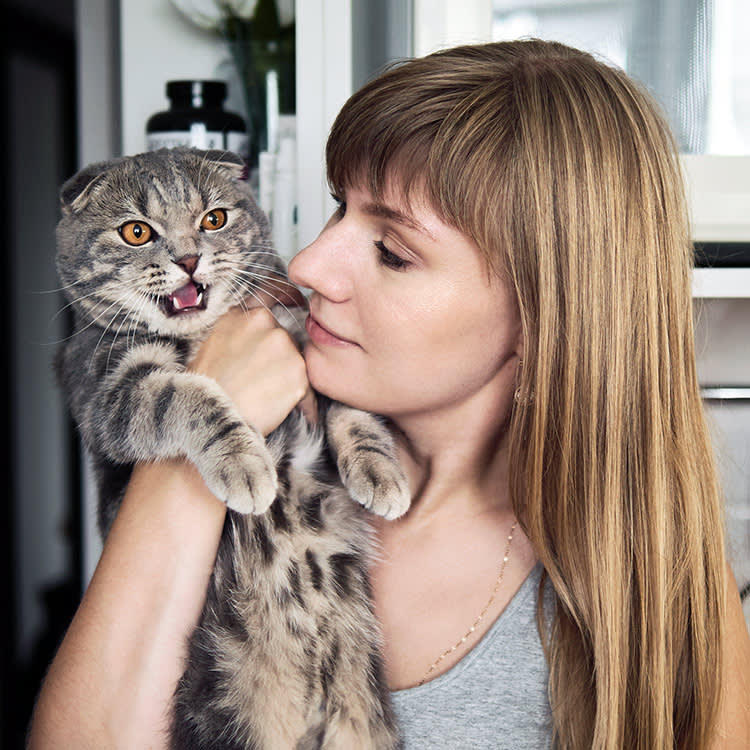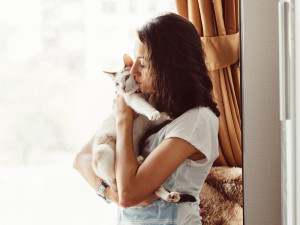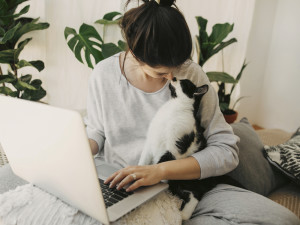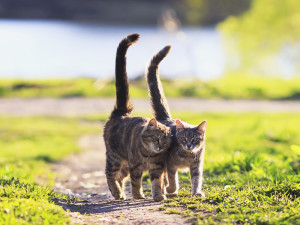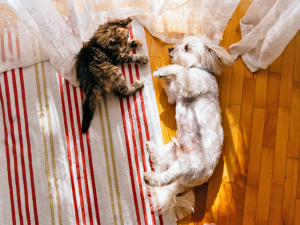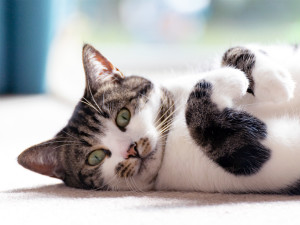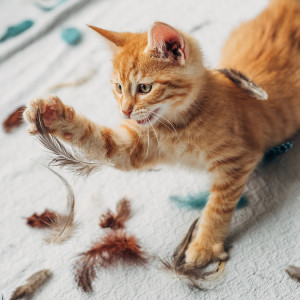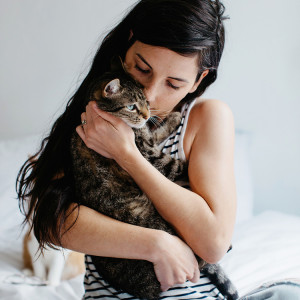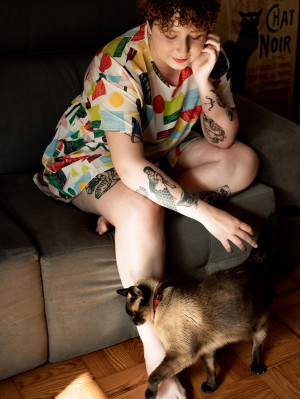Cat Trilling: What Does it Mean and Why Do Cats Do It?
Add this unusual sound to your feline-to-English dictionary
Have you ever heard your cat make a short, soft, rolling, high-pitched chirp? It’s not quite a meow, not quite a purr, but something in between. It’s called trilling and it’s a special form of cat communication. The best part? It’s usually used to show contentment or affection. So if your cat trills as a greeting, you can take that as their way of saying, ‘I’m glad to see you!’
Why do cats trill?
“Trilling is a vocalisation that involves the movement of the mouth and vocal cords in a way that’s unique to cats,” explains trainee animal behaviourist Lottie Phillips. “It’s a form of communication expressing a variety of feelings or desires, including saying hello, asking for attention or displaying contentment,” says Lottie, who explains that a trill is usually a positive declaration. But cats can trill for several reasons and understanding the context can help you figure out what your cat is trying to communicate.
Expressing happiness: “much like a cat’s purr, headbutting, slowing blinking or rubbing against your legs, trilling can often signal that your cat is expressing warmth and pleasure towards you,” says Lottie.
Seeking attention or reminding you it’s dinnertime: cats also trill when they want your attention (which includes feeding). Using this method of communication shows they’re comfortable expressing their needs to you.
A desire to play or explore: a trill is also a way for cats to express their playful nature and it could be an invitation to play with them.
Kitten communication: mother cats also use trilling as a nurturing sound to communicate with their kittens, guiding them or calling them back to safety.
How to respond when your cat trills
Cat parents can become quite well versed in cat communication over time and it’s easy to learn how to decipher what your cat wants if you pay attention to the context and behaviour – and trilling is no different.
“If your cat trills when you walk in the door, it’s a hello and they probably want you to stroke them and act excited to see them in return. If they trill while standing near their food bowl, it could mean ‘feed me’. If the trill is accompanied by affectionate rubbing against you and their tail is standing up straight, it’s a warm gesture and you can respond by stroking them. If your cat’s tail is slowly swishing left and right while they trill then it could be a sign they want to play, so get the toys out,” says Lottie. So take your cues from the context and respond appropriately!
Other ways cats communicate
Cats have a wide range of communication tools, which is made up of body language, sounds and ‘tail talk’.
Purring
Cats often purr when they are completely content or being stroked. But they also purr at other times: there are cats who purr when exploring an unfamiliar area and cats who purr when they’re eating. Purring can be triggered by traumatic movements, by injury or by hunger. There are cats who purr when they’re greeting a friend and cats who purr when they’re anxious.
Headbutting
“Headbutting is one of the ways cats show affection,” says New York-based cat behaviour consultant Jennifer Van de Kieftopens in new tab. “My cats do it to each other, often. If they rub their cheek on you in the process, they may be marking you. Take it as a huge compliment.” It can also be a sign of trust, to get your attention and to express dominance. Occasionally it can mean they are in pain or something is off – so again, pay close attention to the context.
Licking
“If your cat likes to lick you, this could also be for a number of reasons, from showing you love by ‘grooming’ you to scent marking you as ‘their property’,” explains Lottie.
Slow blinking
Is there any bigger honour than a cat slow blinking at you? “Cats slow blink to express love, trust and affection,” says Lottie. Think of the slow blink as the feline version of a gentle, welcoming smile. It’s also one of the few ways that we, as humans, can communicate back with cats in their own language. So the next time your cat slow blinks at you, do it in return to strengthen your bond.
Tail talk
“Your cat’s tail is actually one of their key communication tools,” says Lottie. Their tail position and movement can convey a huge range of emotions and intentions, including anger, happiness and discomfort. If you learn all the meanings, you’ll be able to understand your cat so much better.
Other forms of communication
Cats also lift their paws, hiss, chatter, follow you around the house, sleep on you, bite, stare, knead and have many other ways of showing affection, so it’s important to familiarise yourself with all different kinds of cat communication so you can respond to your cat’s needs and create a two-way dialogue.
But the bottom line is, if you have a cat who trills, you are probably very much loved by your feline companion.
